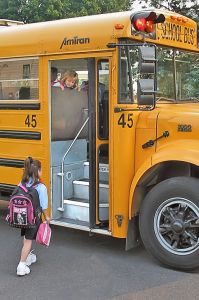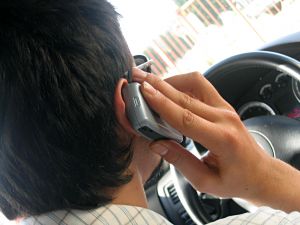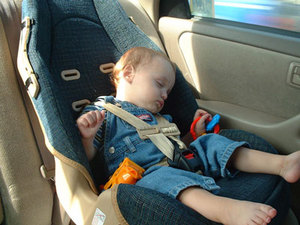“Research shows that as children age, they are less likely to be in the appropriate child safety seat for their age and weight. It’s the responsibility of every parent and caregiver out there to make sure their children are safely restrained every trip, every time,” said Liz Moreno, Safe Kids Lee/Collier Counties Coordinator.
She is right. As a matter of fact, national statistics conclude that about 70 percent of children are not properly buckled in their child seat during each car ride. In an effort to change these statistics and to reduce the risks of child injury in Fort Myers, Lee County is participating in National Child Passenger Safety Week, which is held from September 18th to the 24th.

Our Cape Coral car accident attorneys urge all parents to get involved in this week’s events; take your vehicle and child car seat to a nearby car seat inspection location. At these locations, a certified technician will inspect your child’s car seat and ensure that it’s installed correctly into your vehicle. The technician will also teach you techniques to properly install it yourself. In most cases, these inspections are free of charge. It is recommended that you call and schedule an appointment first.
According to the Florida Department of Motor Vehicles:
-Children under the age of 4 must be kept in a federally approved child-restraint seat.
-Children ages 4 and 5 are required to be seated in a federally approved child-restraint seat or seat belt.
-The driver is responsible for properly buckling up all children in the vehicle.
According to the Governors Highway Safety Association, a driver can be fined up to $60 if pulled over by local and state officers for not properly buckling a child into a motor vehicle. The driver can also face points on his or her driver’s license.
According to the National Safety Council, car accidents are the number one cause of death for children age 3 to 14 in the United States. Oftentimes parents use the wrong type of child seat for their child’s weight, height and age. These seats are sometimes installed improperly as well.
The National Highway Traffic Safety Administration offers these recommendations to parents:
-Children under the age of 1 should be seated in a rear-facing car seat in the back seat of a vehicle. These seats help to support the child’s neck, head and spine in the event of an accident.
-Children ages 1 to 3 should be kept in a rear-facing car seat. Once your child meets certain height and weight standards, it’s time to move him or her to a front-facing car sea installed in the back seat.
-Children ages 4 to 7 are to be seated in a forward-facing car seat equipped with a harness until they’ve reached the limitations for that car seat. They are still to be seated in the back seat.
-Children ages 8 to 12 should be seated in a booster seat until they outgrow it. They are to wear a seat belt that lies comfortable on the upper thighs and not on the stomach. Make sure the belt fits snugly across their chest and not across their neck. They should still remain seated in the back seat and away from an active airbag.
With the proper education, parents and caregivers can help reduce the risks children face in the event of a car accident. Drivers are responsible for properly buckling in all children at all times and should be knowledgeable on how to do so.
Continue reading ›
 Florida Injury Lawyer Blog
Florida Injury Lawyer Blog









 Now that Florida has enacted a law that makes not wearing a seatbelt for adults a primary traffic offense, a Florida Senator is pushing for similar legislation regarding booster seats for children in cars. If he is successful, not having children of a certain age secured in a booster seat, just as with an adult driver and their seat belt, will become reason enough for law enforcement to pull a driver over and issue a citation.
Now that Florida has enacted a law that makes not wearing a seatbelt for adults a primary traffic offense, a Florida Senator is pushing for similar legislation regarding booster seats for children in cars. If he is successful, not having children of a certain age secured in a booster seat, just as with an adult driver and their seat belt, will become reason enough for law enforcement to pull a driver over and issue a citation.


